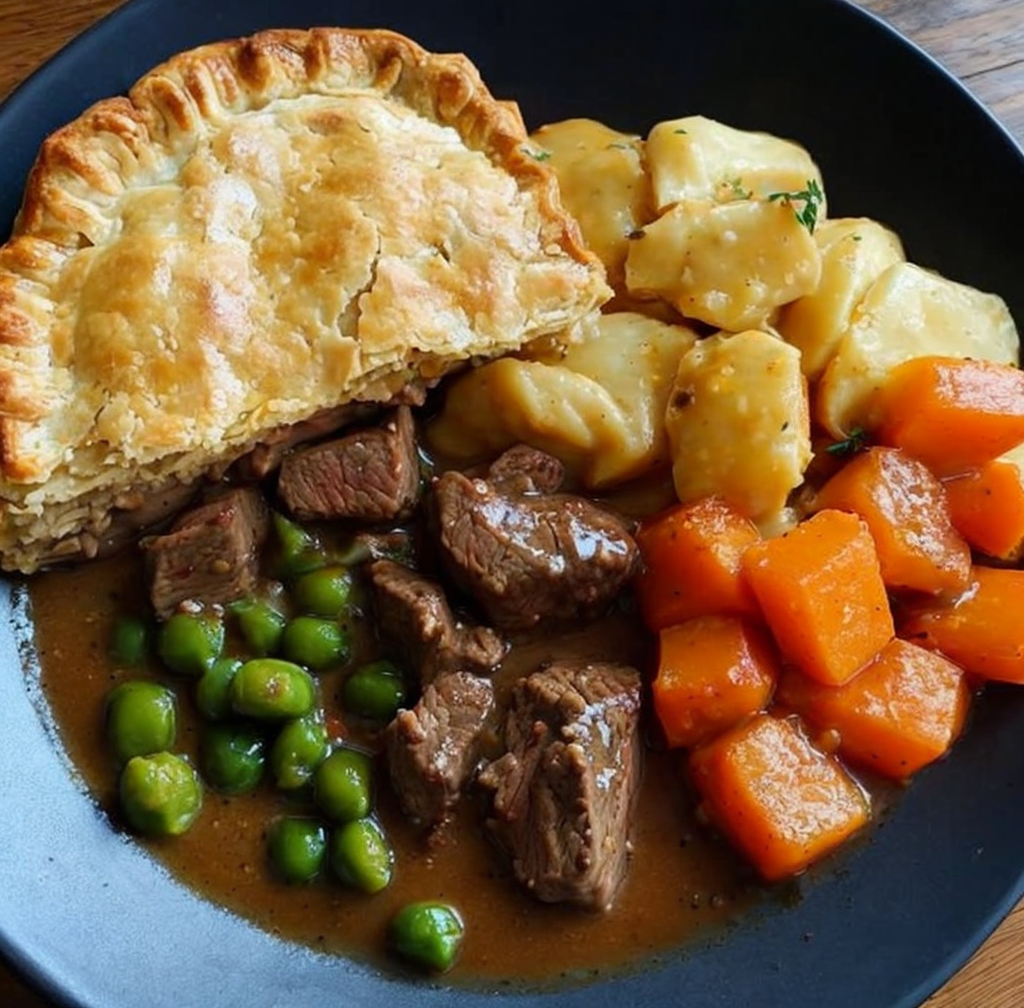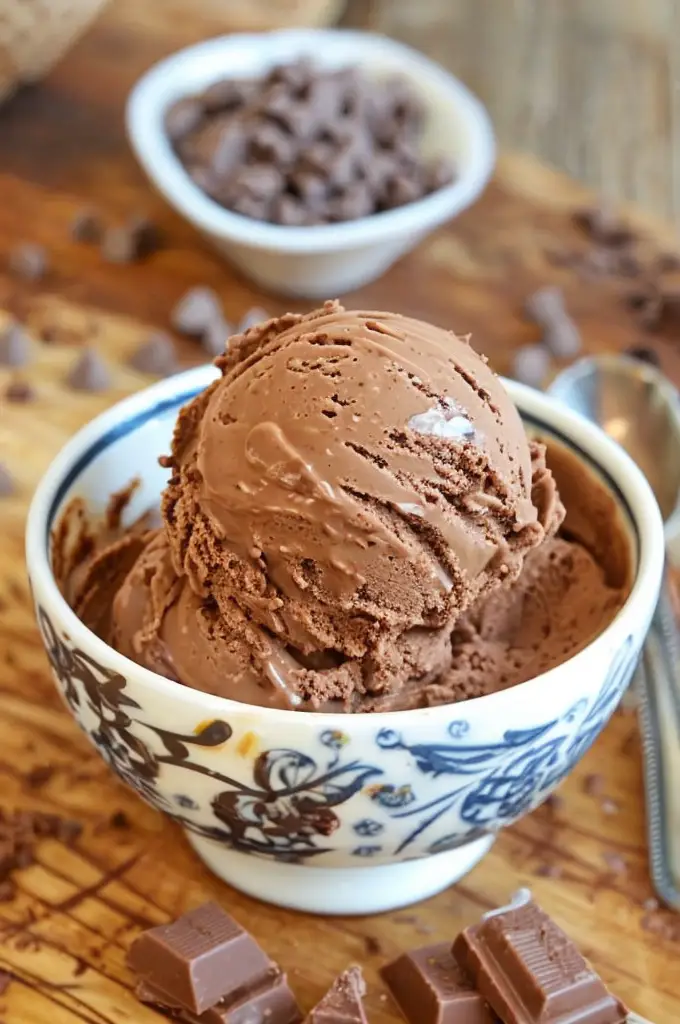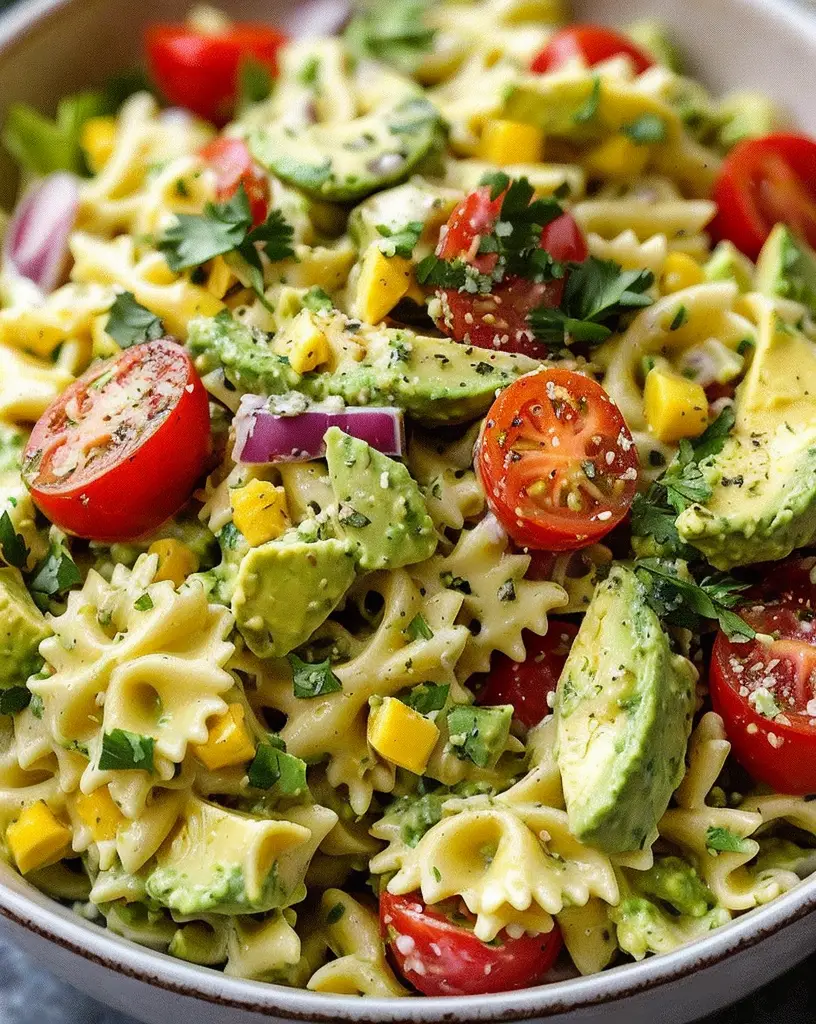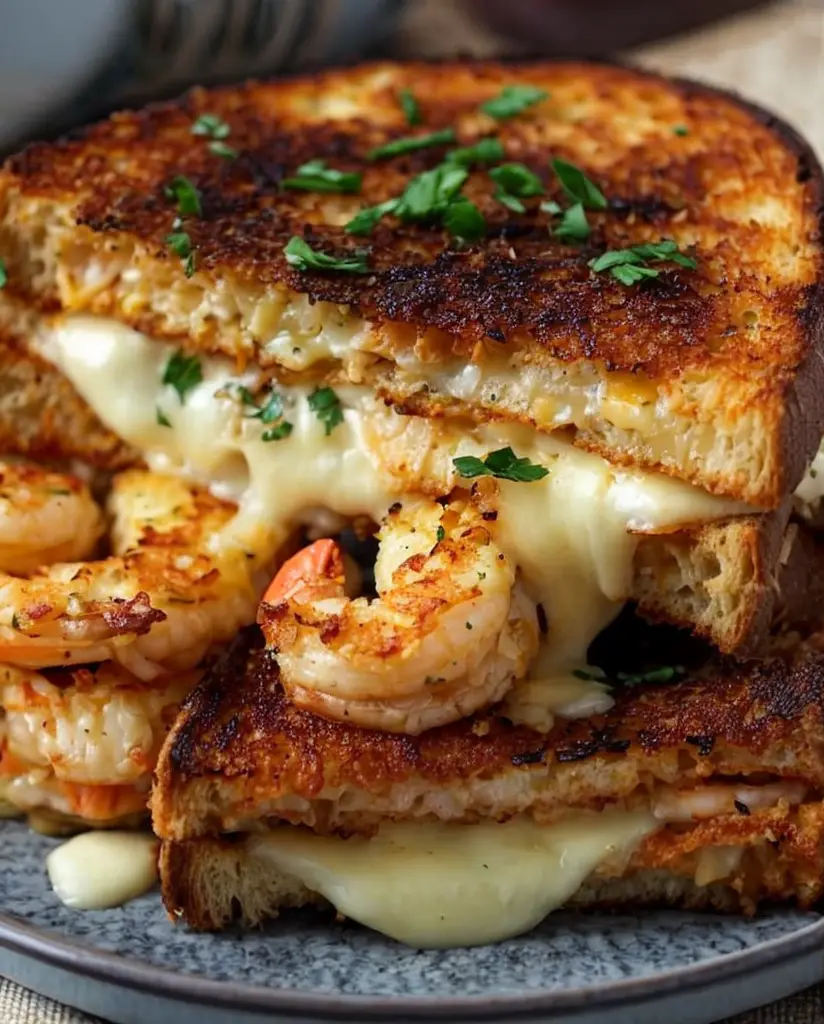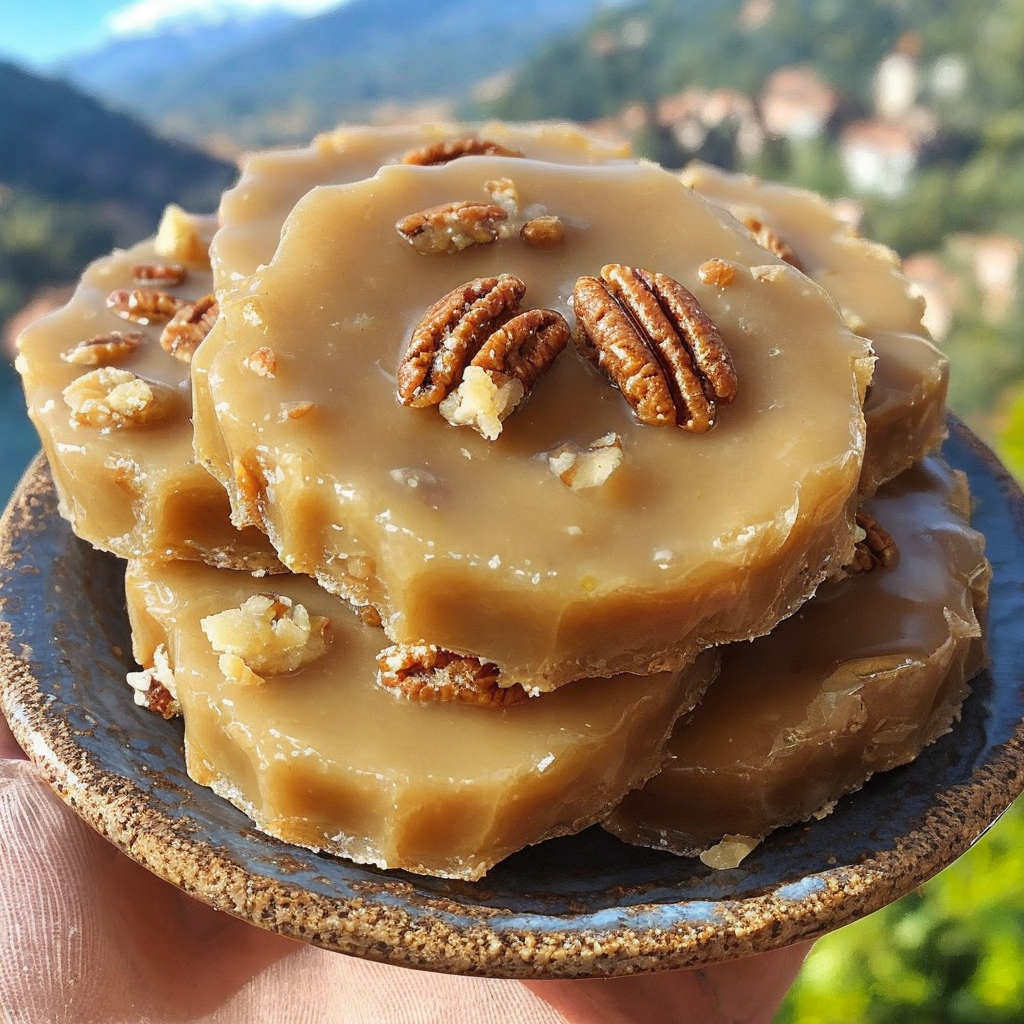Steak and Ale Pie: A Comforting Classic for Cozy Evenings
Imagine the rich aroma wafting through your kitchen as you bake a traditional Steak and Ale Pie. This delightful dish is a savory masterpiece that combines tender, juicy steak with the robust flavor of ale, all encased in a flaky pastry. Whether it’s a special family gathering or a cozy dinner, this pie is sure to warm hearts and stomachs alike.
The allure of Steak and Ale Pie lies not only in its succulent taste but also in its historical roots. With each bite, you’re experiencing a piece of culinary heritage that dates back centuries. As you explore the layers of flavor in this hearty dish, let the blend of seasoned beef and ale transport you to a comforting world of comfort food perfection.
Quick Recipe Highlights
- Flavor Profile: The combination of tender beef and robust ale creates a deep, savory flavor accentuated by herb and subtle onion undertones.
- Texture: Expect a perfect contrast between the crispy, golden crust and the rich, juicy filling.
- Aroma: This pie fills your home with the mouthwatering scents of slow-cooked beef and earthy, malty ale.
- Visual Appeal: A beautifully browned crust with mouthwatering juices peeking through makes this pie an inviting sight on the dinner table.
- Skill Level Needed: Intermediate cooking skills are desirable to manage crust preparation and control of the filling consistency.
- Special Equipment: You’ll need a reliable oven, a deep pie dish, and rolling pin for perfect crust preparation.
Recipe Overview
- Difficulty Level: Intermediate. The recipe involves baking a pastry crust, which may require some experience to get just right. Additionally, achieving the perfect balance of flavors in the filling requires careful seasoning.
- Category: This meal can be categorized as a main course casserole, perfect for hearty meals.
- Cuisine: This pie is a beloved part of British cuisine, with influences from traditional pub food and home-cooked comfort meals.
- Cost: Moderate cost due to the quality of beef and ale involved, but serves enough to be economical for a family meal.
- Season: Best enjoyed in the cooler months of fall and winter when hearty, warming meals are most appreciated.
- Occasion: Steak and Ale Pie is ideal for Sunday dinners, holiday gatherings, or any occasions where guests are looking for comfort and indulgence.
Why You’ll Love This Recipe
The taste of Steak and Ale Pie is second to none, with its rich and indulgent filling that seamlessly pairs the hearty flavor of steak with the slight bitterness of ale. This perfect marriage of ingredients creates an unforgettable taste experience that will keep you coming back for more. The textures between the flaky crust and the tender filling create a delightful contrast that enriches every mouthful.
Preparation is straightforward and can be part of a calming kitchen routine. Once the filling is stewing on the stove, your hands are free to roll and shape the pastry, making it a pleasant, manageable task even for those new to pie-making. With this pie, convenience does not sacrifice quality.
Nutritionally, Steak and Ale Pie provides a good source of protein from the beef, accompanied by the benefits of nutrient-rich vegetables such as onion and mushrooms. Enjoy as part of a balanced meal alongside a side of vegetables or salad to round out its nutritional profile.
Socially, this pie serves as a warming centerpiece to a communal dining experience, perfect for family meals or gatherings with friends. It invites conversation and sharing in a relaxed, comfortable setting.
Finally, the ingredients are accessible and economical, especially when preparing for a larger group. With commonly found ingredients, this pie offers excellent value while promising a gourmet dining experience.
Historical Background and Cultural Significance
Steak and Ale Pie has its roots in traditional British cuisine and dates back to the Roman era, where various savory pastry dishes were part and parcel of banquets. Over the centuries, the pie has stood the test of time, becoming a symbol of comfort and hearty fare across the UK.
Culturally, this pie holds a cherished place within British culinary traditions, often associated with home-cooked warmth and hospitality. Its presence in pubs and inns further ingrained it into British cultural heritage, often served alongside other beloved staples such as fish and chips.
The recipe has evolved over time, with changes largely reflecting the availability of ingredients and local preferences. While traditional recipes call for beef suet in the crust and an ale that imparts a rich, malty flavor, modern variations feature lighter beers and the incorporation of additional vegetables.
Around the UK, regional differences are notable. In some areas, stout or porter replaces ale for a darker color and more intense flavor, while others add regional herbs or spices to bring local character to the dish.
Ingredient Deep Dive
The beef used in Steak and Ale Pie stands at the heart of its flavor profile. Dating back to early British herds, beef was a prize ingredient for meal preparation. Today, selecting the right cut, such as chuck or brisket, ensures a tender bite. Its nutritional benefits include high protein content and essential vitamins, such as iron and B12. Fresh beef should be a vibrant red color and have a clean, fresh scent—opt for well-marbled pieces for the most flavor. Store covered in the refrigerator and use within a few days to maintain freshness.
Ale, the other key ingredient, provides the backbone of deep, robust flavor. Historically, ales have varied greatly in strength and sweetness across regions, allowing for customization based on personal preferences. For this pie, a medium-bodied ale with moderate bitterness is ideal. Store ale in a cool, dark place, ensuring it remains sealed until ready to pour into your recipe.
Common Mistakes to Avoid
- Using low-quality beef, resulting in a lack of tenderness and flavor—opt for marbled cuts.
- Thickening the sauce too early, which can lead to a dry filling—allow it to reduce naturally.
- Overworking the pastry dough, resulting in a tough crust—handle it gently and as briefly as possible.
- Neglecting to chill the pastry, which can turn it greasy—give it ample time in the refrigerator.
- Skipping the sear on beef—it’s crucial for developing flavor in the pie filling.
- Skipping the egg wash on the pastry top—this step ensures a golden-brown crust.
- Using the wrong ale; overly bitter ale can overbalance the pie’s flavors—choose a well-rounded ale instead.
- Serving immediately after baking, which leads to a runny filling—reserve time for resting after baking.
Essential Techniques
Mastering the pastry crust is fundamental to perfecting Steak and Ale Pie. Use cold ingredients and snap the butter into the flour until it resembles coarse breadcrumbs. Resting the dough is essential to relax gluten formation and prevent shrinkage in baking. Avoid overmixing to maintain a tender crumb structure.
Searing the beef helps in developing the deep, savory flavors intrinsic to the filling. Ensure the beef is dry before adding to the pan and do not overcrowd, which can steam the meat rather than sear. Look for a crusty brown layer as an indicator of proper technique.
Pro Tips for Perfect Steak and Ale Pie
A dash of Worcestershire sauce adds depth of flavor to the filling, complementing the beef and ale.
For the crust, brush with an egg wash at least 15 minutes before baking to encourage a glossy, golden finish.
Adding mushrooms imparts an earthy quality that complements both beef and ale.
If using a darker ale, consider balancing flavors with a pinch of sugar to counter bitterness.
Ensure your oven is preheated to ensure proper pastry puff and browning.
Rest the pie for 15 minutes before serving, allowing the filling to set and develop flavor.
Include a bay leaf during stewing for subtle, aromatic undertones.
Variations and Adaptations
Traditional recipes embrace stout for a darker, richer filling, especially in Northern regions of the UK.
Seasonal adaptations can include adding root vegetables like carrots and parsnips during winter months.
For a gluten-free twist, consider almond flour pastry for crust and cornstarch for thickening.
Vegetarian adaptations include substituting portobello mushrooms for beef and dark vegetable broth in place of ale.
To vary flavor, try using a smoked or spicy ale, adding complexity and warmth to the pie.
Change the crust by using puff pastry for a lighter, flaky cap or experiment with alternative grains.
Serving and Presentation Guide
For traditional presentation, serve directly from the baking dish to capture rustic charm.
Add a dusting of freshly chopped parsley for a vibrant pop of color against the golden crust.
Serve with classic accompaniments like creamy mashed potatoes or steamed green vegetables for a complete meal.
Consider an elegant touch with individual ramekins for personal pies—great for formal dinner parties.
Ensure to serve hot, where steam-rise showcases aromatic appeal and ensures the crust remains flaky.
Portion with a sharp, serrated knife for clean cuts that maintain the integrity of the delicate pastry.
Wine and Beverage Pairing
For wine pairing, a robust red like a Shiraz or Malbec complements the hearty beef flavors harmoniously.
Non-alcoholic options like ginger beer enhance the pie’s aromatic spice undertones without overpowering its flavors.
For more traditional pairings, a pint of ale or stout served chilled harmonizes seamlessly with the dish’s core ingredients.
Consider lighter options such as a chilled cider for contrast, providing a refreshing palate cleanse.
Temperature plays a key role—ensure any beverage pairing enhances and doesn’t overshadow the pie’s warmth.
Serve in proper glassware; for ale and stout, a tulip glass enhancing aroma and flavor adds a nice touch.
Storage and Shelf Life
Refrigerate leftovers in an airtight container, where they should keep for up to three days.
Ensure the pie cools to room temperature before covering and refrigerating to maintain its crust integrity.
For freezing, wrap individual portions tightly in cling film and aluminum foil to prevent freezer burn—consume within two months.
Look for sauce separation or off smells as spoilage indicators, signaling it’s past its prime.
Reheat gently in a preheated oven at 180°C (350°F) to restore the crust’s flakiness and filling warmth.
Avoid microwave reheating, which can make the crust soggy—opt for the stovetop or oven instead.
Make Ahead Strategies
Prepare the beef filling a day ahead and store refrigerated, allowing flavors to meld overnight.
Pastry can be made in advance and stored wrapped in the fridge for up to two days; bring to room temperature before rolling.
Store each pie component separately to prevent premature moisture absorption in the crust.
To assemble on day of, roll the pastry while the oven preheats—it’s a seamless coordination enhancing timeliness.
For freshness, add any last-minute herbs or sprinkles of salt post-baking to keep flavors vibrant.
Follow stepwise reheating for best quality—heat filling before assembling to ensure consistent temperature.
Scaling Instructions
To halve the recipe, adjust seasoning carefully and consider using individual ramekins for proportionate serving.
Doubling the recipe requires attention to oven size; ensure adequate space for proper airflow and cooking.
Adjust equipment as necessary—large mixing bowls or baking trays facilitate doubling efforts.
Cooking time modifications may be required; longer for deeper dishes, shortened for thinner, more spread-out versions.
Anticipate additional storage space for leftovers or preparing to freeze excess portions.
Consider half-prep with full baking maintaining quality for future reheats or dinners.
Nutritional Deep Dive
Balanced macros involve the protein-rich beef, complemented by fats from pastry, and energy from carbohydrates.
Include micronutrients like iron and zinc from beef, critical for bodily function and immunity enhancement.
Consume within dietary guidelines to enjoy flavor while maintaining a health-focused approach.
Portion control helps regulate intake; enjoy alongside vegetables to balance caloric consumption.
Weight management integrates mindful pairing of lighter side dishes and compensating for richer main components.
Ensuring plenty of vegetables alongside enhances fiber intake without compromising pie enjoyment.
Dietary Adaptations
For gluten-free dining, sub conventional crust with gluten-free flour blends and adjust as needed.
Dairy-free versions can use margarine or coconut oil in pastry evoking different but delicious flavors.
Vegan pie ensures hearty enjoyment by swapping beef with lentils and using plant-based broken ale.
Low-carb adjustments include a crustless version or almond flour cover to support dietary preferences.
Keto adaptations follow similar routes with focus on protein fill and minimal carb impact through smart substitutions.
Paleo-friendly adaptations consider removal of ale, opting for bone broth, and ensuring grain-free pie assembly.
Switch conventional ingredients for low-FODMAP-friendly versions, supporting gut health and tolerance.
Troubleshooting Guide
Overly wet filling can be reduced by increasing heat and allowing excess moisture to evaporate.
Flavor balance issues, such as too bitter, can be rectified with sweetness like sugar or honey to mellow flavors.
Ensure crust texture meets expectations by monitoring butter and water ratios in preparation—too much leads to toughness.
Equipment like old ovens causing uneven temperature should be remedied with oven thermometers for accuracy.
Ingredient swaps like gluten-free flour may alter dough handling; trial small quantities for error minimization.
Timing concerns involve adjusting for altitude or humidity that extends or shortens cooking naturally.
For gaps between filling and crust, press down gently after baking to encourage cohesiveness without disturbing pie integrity.
Recipe Success Stories
Community feedback includes rave reviews of homey warmth, with excellent pairing suggestions enhancing family gatherings.
Creative twists witnessed range from mushroom lovers infusing earthy flair to added spices enhancing aromatic notes.
Readers have successfully adapted recipes for slow-cooker versions, maintaining tenderness and efficiency.
Suggestions for healthier preparations often involve sides, from salads lifting profiles to low-carb accompaniments aiding balance.
Photography tips highlight gaining visual appeal through parsley sprinkles or contrasting plating, more inviting and enticing.
Frequently Asked Questions
Yes, you can freeze the pie either baked or unbaked for up to two months. Ensure wrapping is airtight to prevent freezer burn and label clearly for convenience.
What’s the best type of ale to use?
Opt for a medium-bodied ale that isn’t overly bitter. Malty ales are preferred as they enhance the richness without overpowering other ingredients.
Can I make the crust from store-bought dough?
Store-bought dough is an efficient option, though personal preference can dictate using homemade for original flavors and tailored flakiness.
How do I prevent the crust from getting soggy?
Use blind-baking techniques for part-time baking without filling to set and dry initial crust before complete assembly contributes to texture integrity.
Can I make this pie vegetarian?
Substituting beef with hearty vegetables or plant-based proteins such as mushrooms and lentils will adapt the pie beautifully for vegetarians.
How do I reheat the Steak and Ale Pie?
For best results, reheat in a preheated oven at 180°C (350°F) to ensure the crust regains its flakiness and the filling is warmed thoroughly.
Can I make it spicier?
Incorporate spices like cayenne or chili powder carefully to add heat while maintaining balance with other flavors, adjusting to taste preferences.
What sides pair well with this pie?
Mashed potatoes, green beans, or salad offer contrast and balance to the richness, enhancing overall meal satisfaction.
Is egg wash necessary for the crust?
While not essential, an egg wash ensures that golden color and adds a restaurant-quality finish to the baked product.
Can I serve this pie cold?
While serving cold maintains flavors, warm serving is preferred to fully appreciate textures and contrasts inherent to the dish.
Additional Resources
Explore more comforting pies like chicken pot pie and vegetable pies for variety in your dinner routine.
Technique guides on baking can provide helpful insights for perfecting pastry skill—check for online tutorials or step-by-step videos.
Ingredient guides offer substitution tips and flavor pairings, supporting variety and dietary needs easily accessible online.
Equipment like pie weights improve blind-baking effectiveness, ensuring crust stability and uniform cooking across the dish.
Seasonal twists can be found through blog recommendations or culinary websites, promoting creativity and adaptation throughout the year.
Join the Conversation
Share your photos and experiences on social media platforms, using hashtags for greater connection and engagement with fellow cooks.
Photography tips can elevate presentation, focus shots on chosen pie sections or highlight textural contrast for visual appeal.
Review submissions welcome on personal blogs or cooking platforms, adding community feedback and curated tips to recipe pages.
Community engagement strengthens shared kitchen experiences, consider participating in virtual cooking classes or forums.
Try different recipe variations and share outcomes, sparking creativity and diverse interpretation in favorite classics.
The Recipe
Steak and Ale Pie
Serves: 6
Prep Time: 30 mins
Cook Time: 90 mins
Total Time: 120 mins
Kitchen Equipment Needed
- Oven
- Deep pie dish
- Rolling pin
- Saucepan
- Pastry brush
Ingredients
- 500g beef chuck, diced
- 1 tbsp olive oil
- 1 onion, finely chopped
- 2 cloves garlic, minced
- 2 tbsp flour
- 300ml beef stock
- 200ml ale
- Salt and pepper to taste
- 250g mushrooms, sliced
- Fresh thyme, a few sprigs
- Pastry for topping (store-bought or homemade)
- 1 egg, beaten (for wash)
Directions
- Preheat oven to 200°C (400°F).
- Brown beef in olive oil over medium heat in a saucepan. Remove and set aside.
- Sauté onion and garlic until soft, then add mushrooms and cook until browned.
- Stir in flour and cook for one minute.
- Return beef to the pan, pouring in the ale and stock. Add salt, pepper, and thyme.
- Cover and simmer for 1 hour 15 minutes or until beef is tender and sauce is thickened.
- Transfer filling to a pie dish and top with pastry, sealing edges.
- Brush pastry with beaten egg and make a small cut for venting.
- Bake for 25-30 minutes or until crust is golden.
- Let rest before serving.
Recipe Notes
- If sauce is too thin, remove cover in the final simmering minutes to thicken.
- Change up herbs such as rosemary for different flavor profiles.
- Ensure pie’s center does not remain undercooked by monitoring baking time.
